· 9 min read
This article is part of a seven-piece series on the Global ESGT Megatrends 2025-2026. You can find the previous piece here.
Overview: The urgency of understanding socioecological polyrisks and tipping points
The gist of this Megatrend is that the socioecological triangle – climate + biodiversity + humanity – i.e., life on Earth is quickly moving into a permanent state of polycrisis, polyrisk and imminent planetary tipping points from which we may be unable to recover.
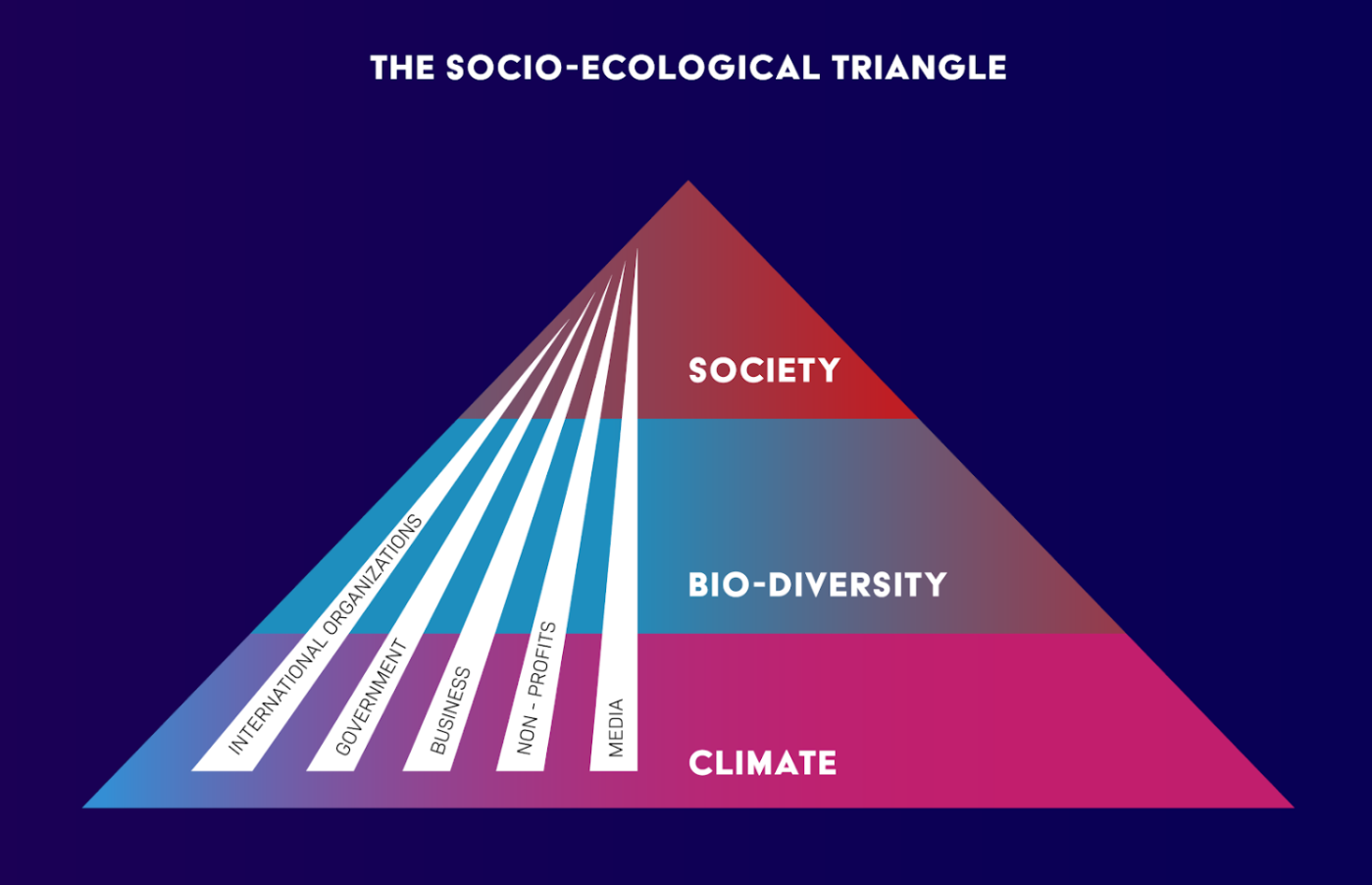
Source: A. Bonime-Blanc. The ESGT Megatrends Manual 2023-2024. Diplomatic Courier.
It all starts (and, in many ways, ends) with the fact that the global mean temperature – as depicted in the chart below—has been marching inexorably upward for the past century and especially in the past decade which has exhibited the 10 warmest years in recorded human history.
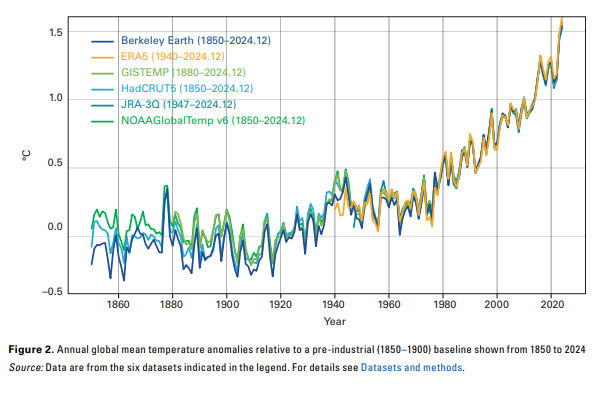
Source: World Meteorological Organization
https://library.wmo.int/records/item/69455-state-of-the-global-climate-2024
And yet planetary heating is getting worse and potentially much worse, leading to what climate scientists are calling climate “tipping points”. Here is a quote from the just closed Global Tipping Points Conference held in Exeter, UK, June/July 2025.:
“Global warming is projected to exceed 1.5C within a few years, placing humanity in the danger zone where multiple climate tipping points pose catastrophic risks to billions of people. Already tropical coral reefs have crossed their tipping point and are experiencing unprecedented dieback, impairing the livelihoods of hundreds of millions who depend on them. Current warming has activated these irreversible changes and every fraction of additional warming dramatically increases the risk of triggering further damaging tipping points.”
The big picture: “The socioecological triangle – polyrisks and tipping points”
This 4th Megatrend of the Global ESGT Megatrends for 2025-2026, explores the socioecological triangle – the deep interconnectedness of climate, biodiversity and human life on Earth - in the context of rising polyrisks and climate tipping points. The degradation of the planet via ongoing and accelerating climate dangers and tipping points that may be moving faster than ever, creating unprecedented chaos as well as some opportunity - but only if the various layers of global, national and organizational resilience are collaboratively, rapidly and systematically deployed.
Key trends within the “Socioecological polyrisks & tipping points rising”
Let’s examine 4 key trends related to this Megatrend.
Trend 1 – The Interconnectedness of socioecological polyrisks
The annual World Economic Forum (WEF) Global Risks Report for 2025 which assesses 5 categories of global strategic risk (environmental, geopolitical, societal, technological and economic) shows the disproportionate weight of environmental and social risks in the top 10 strategic risks for the 2 year and 10 year horizons. Together, these socioecological risks dominate the 2-year and 10-year global strategic risks horizon – with 6 and 7 out of the top 10 risks for the 2- and 10-year outlooks, respectively. See WEF Figure below where environmental risks are in green and societal in red.
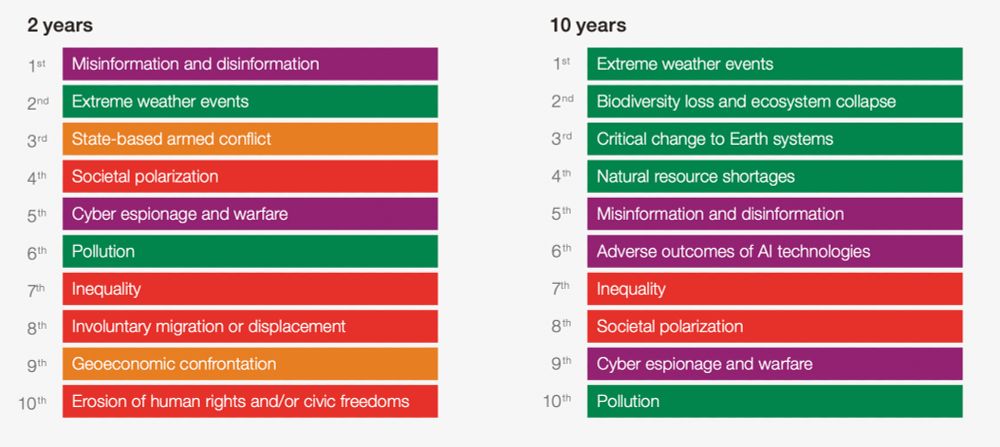
Source: WEF Global Risks Report 2025.
We also need to understand risks as multifaceted, overlapping, interconnected and systemic – constantly affecting, influencing, pushing and pulling on one another. In my forthcoming book Governing Pandora, I coined the term “Polyrisk” to describe this multifaceted overlapping and interconnected nature of risk in the 21st Century. It is important to understand socioecological risks in the polyrisk context. See Figure below.

Polyrisk manifested as overlapping multifaceted risks
Finally, to illustrate the concept of risk interconnection, I could not think of a better visualization than the one WEF provides in its Global Risks Report. See below.
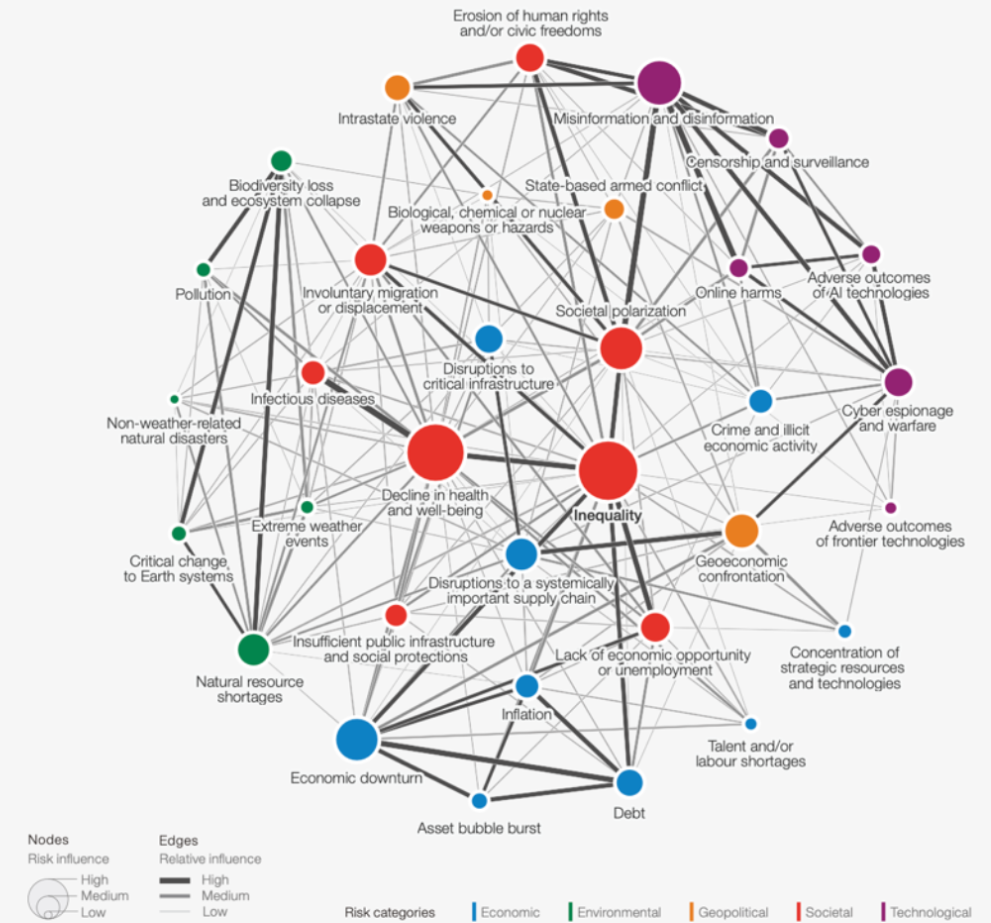
Global risks landscape: An interconnections map
Source: Global Risks Report, WEF
Trend 2 - Climate tipping points emerging
Below are a few examples of possible tipping points and their potential timeline according to the IPCC, WMO, NOAA, and several additional scientific sources consulted:
Greenland ice sheet collapse. The threshold to trigger a tipping point is ~1.5°C to 2°C of warming. The irreversible melting could lead to 7 meters of global sea level rise over centuries. Currently, melt rates are accelerating with some studies suggesting that portions of these melts may be past a point of no return.
West Antarctic ice sheet disintegration. The threshold is ~1.5°C to 2°C as the risk of an unstoppable collapse could raise sea levels by up to 5 meters. The warming is occurring as melting from below due to warm ocean currents; signs of destabilization have already been observed.
Atlantic meridional overturning circulation (AMOC) slowdown or collapse. The threshold for collapse is uncertain and the risk increases with warming and Greenland meltwater. This tipping point could disrupt global weather patterns, intensifying droughts in the Sahel, cooling Europe, and causing monsoon failure.
Thawing of permafrost. The threshold is ~1.5°C and above as massive amounts of methane and CO₂ being released are amplifying warming. There already is thawing across Siberia, Alaska, and Canada.
Amazon rainforest dieback. The threshold is considered to be ~3°C or less, exacerbated by deforestation and the risk is that parts will transition to a savanna-like state, releasing vast carbon stores and reducing rainfall regionally. Signs of regional drying and forest stress are already visible.
And if these possible Tipping Points were not enough to scare us, scientists are worried about what they call “Tipping Point Cascades” where one tipping point may trigger others thereby causing a cascade of effects. An example they cite includes the Greenland melt, affecting the AMOC slowdown, which in turn may have effects on the decline of Amazon rainfall with consequent forest dieback and more carbon released. (Sources: IPCC AR6 (2021–2023) reports; Potsdam Institute for Climate Impact Research (PIK); Recent studies in Nature, Science, and PNAS (e.g., Lenton et al., 2019; Armstrong McKay et al., 2022). See Figure below created with the assistance of ChatGPT and the aforementioned sources.
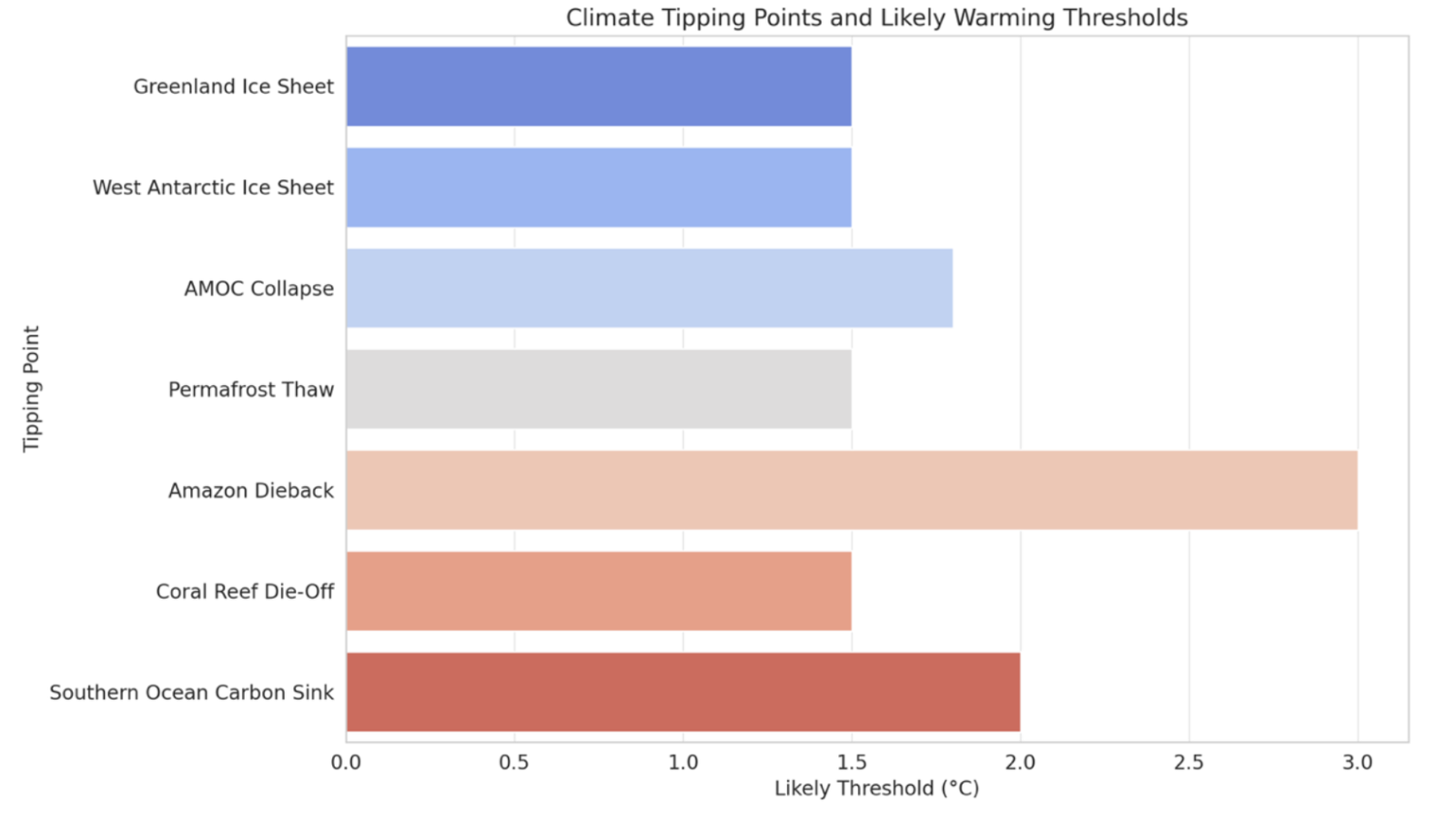
Source: ChatGPT inquiry including above sources.
Trend 3 - Biodiversity preservation becoming a focal point
Major biodiversity breakthroughs took place in recent months and seem to be gaining momentum worldwide reflecting the recognition that biodiversity is critical to planetary survival. The COP16 regarding biodiversity was successfully concluded with more progress than anticipated with $200B being committed for nature. Indeed, several businesses are starting to prioritize nature and biodiversity as part of their business strategies. For example, L’Oreal through a “Universal Registration Document” traces 92% of its biobased ingredients from sustainable sourcing, and Unilever is generating €1.2B in annual sales from plant based offerings. See Figure below summarizing the 23 Targets of the Kunming-Montreal Global Biodiversity Framework.
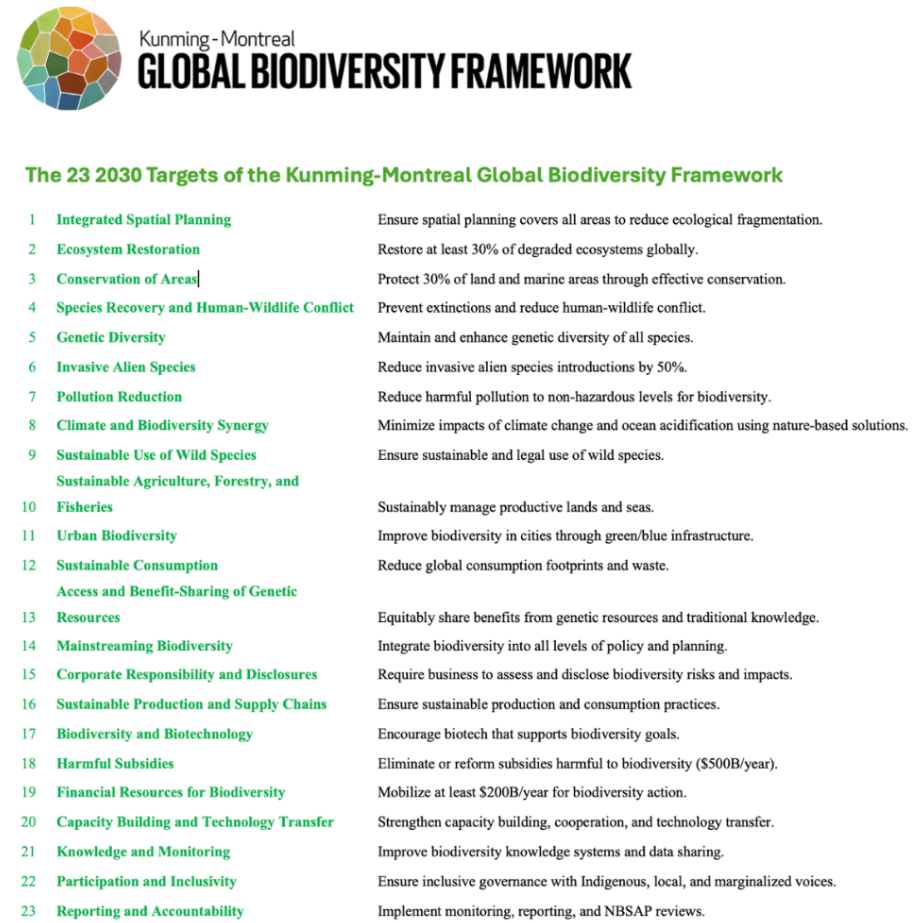
Source: Adapted from https://www.cbd.int/gbf/targets
Trend 4 – An explosion of climate, nature, and social tech opportunity
As the Global Tipping Points Conference concluded:
“To trigger positive tipping points that help eliminate the 75% of greenhouse gas emissions linked to the energy system, and transition away from fossil fuels in a just, orderly, and equitable manner, we call on policymakers to adopt (and enforce) ambitious policy mandates to phase in clean technologies and phase out fossil-fueled ones. These include bans on the future sale of petrol/diesel cars, diesel trucks, and gas boilers. For less mature technologies such as green hydrogen, green ammonia, and green steel, we call for increased investment in research, development and deployment”.
What does this mean? The tech is there – what is missing is the governance and implementation collaboration and follow up. The greatest barrier to this progress is that deeply vested fossil fuel interests—egged on by governments like the US Trump administration and various oil rich Middle Eastern nations. Meanwhile, The Economist ran a cover story last year stating: “To call solar power’s rise exponential is not hyperbole, but a statement of fact. Installed solar capacity doubles roughly every three years and so grows tenfold each decade…The next ten-fold increase will be equivalent to multiplying the world’s entire fleet of nuclear reactors by eight in less than the time it typically takes to build just a single one of them.”
Moreover, the frontiers of climate tech are now in the hands of some of the huge tech companies. Based on a model being currently developed, Nvidia’s climate scientists claim that “we’re at the moment now where AI can compete with physics for storm scale prediction.” And there are constantly new technologies being developed for nature protection including using cutting-edge AI, GenAI and agentic AI tools—from acoustic sensors tracking biodiversity to drone and vision systems for poaching prevention. In the fintech space, blockchain-based platforms are also under development to ensure transparent, traceable accountability in conservation funding, carbon credits, and genetic benefit-sharing.
Leadership to dos to futureproof “Socioecological polyrisks & tipping points rising”
Because we live in a “polyrisk” and “polycrisis” world, we need to be as prepared as possible to survive and thrive through it all. It’s about building resilience—polyrisk and polycrisis preparedness. Organizationally, whether you are a business, nonprofit-government agency or university, you need to have a plan to deal with all this socioecological disruption. Below are four actionable leadership to dos to consider.
-
Identify and integrate your key socioecological issues into enterprise risk management and risk governance. Ensure that all relevant social, biodiversity and environmental risks and opportunities are integrated into organizational risk management and risk governance and that your board is fully informed and continually educated on changing conditions.
-
Deploy polyrisk and polycrisis preparedness into strategy. Understand that tipping points may happen in the next 1-2 decades – what does that mean for your business strategy? Conduct appropriate scenario planning. Integrate key societal, environmental and biodiversity risks and opportunities into your business plan and strategy.
-
Evaluate how tipping points may impact your supply chain. Undertake a serious supply chain analysis including an understanding of how certain tipping points might affect your upstream and downstream supply chains and make sure that alternative, diversified arrangements and back up plans are made.
-
Understand socioecological impacts on your key stakeholders. Conduct an analysis of who your most affected stakeholders are – employees, contractors, subcontractors, communities, others. Understand the key socioecological issues of your key stakeholders—especially employees, but also customers, and communities—and develop programs and plans to address such key issues including health (mental and physical), safety, and crisis management.
This article is part of a seven-piece series on the Global ESGT Megatrends 2025–2026. You can explore all parts of the series, including the next piece, The Global ESGT Megatrends 2025-2026 | #5 - Stakeholder capitalism metamorphosing.
illuminem Voices is a democratic space presenting the thoughts and opinions of leading Sustainability & Energy writers, their opinions do not necessarily represent those of illuminem.






